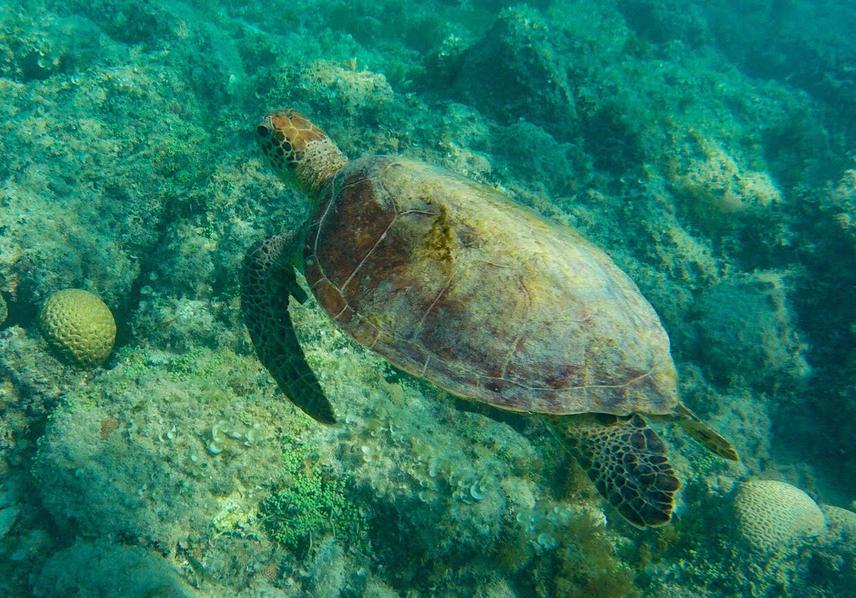Camila Miguel
In 2015, Fundão tailings dam collapsed in Mariana, Minas Gerais state, southeast Brazil, releasing an estimated amount of 43 million m3 of iron ore tailings. It was considered the biggest environmental disaster in the world mining industry. Sea turtles are among the exposed organisms exposed that use the coastal areas to nest and feed. Feeding sites are important for the development of the early stages of sea turtle life since these areas receive populations from several places.

A juvenile green sea turtle swimming in the waters of Coroa Vermelha reef. © Camila Miguel
Although few studies have investigated the health of juvenile sea turtles in Brazil, no study to date has used health parameters to verify the effects of heavy metals from an environmental disaster. Sea turtles are globally classified as endangered and marine pollution is one of the main factors responsible for population decline. In this context, it is extremely important to study the interactions of heavy metals with biochemical and physiological processes to determine the impact of these contaminants on sea turtles' health, reproduction, and survival.
Here we aim to analyse the concentrations of heavy metals in juvenile green sea turtles globally endangered, in order to correlate with health parameters and to verify the damages caused. In addition, contaminated and uncontaminated areas will be compared to have a more robust and reliable profile of the results. Therefore, contributing to the revision of management plans for saving this important species to extinction.